SAP Systems Administration
Filter By
Browse By
- SAP Analytics and AI
- SAP Application Development and Integration
- All SAP Application Development and Integration
- SAP ABAP
- SAP ABAP Development Tools
- SAP ABAP Test Cockpit
- SAP API Management
- SAP BAPI
- SAP Basis
- SAP BRF
- SAP Business Application Studio
- SAP CMS
- SAP Design Studio
- SAP Development Tools
- SAP DevOps
- SAP EAI
- SAP EDI
- SAP Extension Suite
- SAP Fiori
- SAP Fiori Elements
- SAP Integration Suite
- SAP Low Code Application Development
- SAP Low Code Automation
- SAP Netweaver
- SAP Release Management
- SAP UI5
- SAP Web Application Server
- SAP Web IDE
- SAP Business Process Management
- SAP Center of Excellence
- SAP CIO
- SAP Customer Experience
- SAP Data and Data Management
- All SAP Data and Data Management
- SAP BW
- SAP BW/4HANA
- SAP Crystal Reporting
- SAP Data Archiving
- SAP Data Center
- SAP Data Governance
- SAP Data Integration
- SAP Data Migration
- SAP Data Quality
- SAP Data Services
- SAP Data Strategy
- SAP Data Visualization
- SAP Data Warehouse Cloud
- SAP DMS
- SAP Document Control
- SAP EIM
- SAP ETL
- SAP ETL Tools
- SAP HANA
- SAP HANA Administration
- SAP HANA Deployment Infrastructure
- SAP HANA Studio
- SAP Master Data
- SAP Master Data Governance
- SAP MDM
- SAP Enterprise Architect
- SAP Enterprise Asset Management
- SAP ERP
- SAP Finance
- All SAP Finance
- SAP Accounting
- SAP AR AP
- SAP Asset Accounting
- SAP Billing Systems
- SAP BPC
- SAP BRIM
- SAP Cash Management
- SAP Central Finance
- SAP Controlling
- SAP COPA
- SAP Cost Center Accounting
- SAP e-invoicing
- SAP FICO
- SAP Finance Automation
- SAP Financial Closing Cockpit
- SAP Financial Consolidation
- SAP Financial Planning
- SAP FX Risk
- SAP General Ledger
- SAP Global Tax Management
- SAP Hyperion
- SAP Order to Cash
- SAP Payment Processing
- SAP Profitability Analysis
- SAP Rebate Management
- SAP S/4HANA Finance
- SAP Universal Journal
- SAP Governance Risk and Compliance
- SAP Human Capital Management
- SAP Intelligent Technologies
- SAP Platform and Technology
- All SAP Platform and Technology
- SAP Business Technology Platform
- SAP Cloud Connector
- SAP Cloud Integration Platform
- SAP Cloud Migration
- SAP Cloud Platform
- SAP Cloud Providers
- SAP Cloud Strategy
- SAP Container Platform
- SAP Digital Asset Management
- SAP Digital Integration Hub
- SAP Digital Signature
- SAP HANA Enterprise Cloud
- SAP HEC
- SAP Hyperscalers
- SAP Infrastructure
- SAP Messaging
- SAP Smart Forms
- SAP Quality and Testing
- SAP Security
- SAP Spend Management
- SAP Supply Chain Management
- All SAP Supply Chain Management
- SAP APO
- SAP Asset Management
- SAP Business Network
- SAP Digital Manufacturing Cloud
- SAP Digital Twin
- SAP EWM
- SAP IBP
- SAP Inventory Management
- SAP Label Printing
- SAP Logistics
- SAP Manufacturing
- SAP Manufacturing Automation
- SAP MES
- SAP MII
- SAP MM
- SAP MRO
- SAP MRP
- SAP Order Management
- SAP Plant Maintenance
- SAP PLM
- SAP Production Planning
- SAP S&OP
- SAP SD
- SAP SPM
- SAP Supply Chain Planning
- SAP Track and Trace
- SAP Transportation Management
- SAP System Administration
SAP Systems Administration
With the criticality of SAP to the enterprise and the increasing complexity of SAP landscape, SAP Systems Administration is an increasingly vital function. Not only does this function have to manage today’s complex migrations including to SAP S/4HANA, they also have to ensure frequent updates and upgrades smoothly.
On a day-to-day basis, SAP Systems Administrators are are responsible for ensuring performance, reliability, and support of SAP application environments. Understanding the technical infrastructure standards and integration requirements is critical part of their job. They should also be managing capacity and ensuring performance along with the changing needs of the business such as seasonality. With the advent of cloud deployments, they often manage cloud capacity planning as well.
SAP Systems Administration
With the criticality of SAP to the enterprise and the increasing complexity of SAP landscape, SAP Systems Administration is an increasingly vital function. Not only does this function have to manage today’s complex migrations including to SAP S/4HANA, they also have to ensure frequent updates and upgrades smoothly.
On a day-to-day basis, SAP Systems Administrators are are responsible for ensuring performance, reliability, and support of SAP application environments. Understanding the technical infrastructure standards and integration requirements is critical part of their job. They should also be managing capacity and ensuring performance along with the changing needs of the business such as seasonality. With the advent of cloud deployments, they often manage cloud capacity planning as well.
SAP Systems Administrators monitor the performance of system applications. Automation and monitoring of performance, including new solutions such as AIOps, have entered the field.
With the pace of upgrades and updates ramping up, their role in change and release management has also become complex. They perform migration tasks such as change request review, software builds, release documentation, production issue resolution and tracking report distribution. This article Speed Up Process Change for SAP ERP talks about how to make ERP updates more agile.
In addition, they have a major role in developing and executing contingency plans in the event of system outages. They may have disaster recovery and business continuity plans and tools to ensure minimum loss to the business. They also provide support to the Service Desk.
SAP Systems Administrators are a key resource during deployment of new solutions and infrastructure. They often liaise with software vendors about security patches and updates. They develop plans to install these patches and test them. Keeping up with security patches and updates is very critical, as without them, the company is vulnerable to attacks. Read this article to understand the challenges of patching.
6 results
-

- SAP Systems Administration
 Premium
Premium
How Do You Improve Visibility Into Your SAP Landscape?
Published: 31/October/2022
Reading time: 8 mins
IT landscapes continue to increase in complexity. A decade ago, all the enterprise solutions that an organization used were probably from the same vendor and were running on local systems and infrastructure. Today, that environment has changed completely. Few organizations are using just one vendor for all their solutions. Some solutions may still be running…
-

Steps to Output a Microsoft Word Document from an SAP System
Published: 04/December/2017
Reading time: 12 mins
Many companies start producing and generating their documentation in Microsoft Word, and this method works fine for a small number of documents. However, over time as business needs grow, this method becomes increasingly difficult to manage. One solution is to migrate documents from Word to an XML-based file format that is easy to parse with...…
-

Gain Control of Your IT Environment: Q&A on Navigating the Controlling Options of Your SAP System
Published: 01/February/2016
Reading time: 13 mins
There are more than a dozen controlling options available in the SAP system. Determining how to best interpret those options depending on how your organization stores data and handles reporting and training requirements can be a challenge. Financials 2016 speaker Rohana Gunawardena recently took readers’ questions on how to choose the most optimal solution to…
-
-

Prepare for an Audit of Your SAP Systems: What You Need to Ensure a Successful Result
Published: 26/March/2010
Reading time: 32 mins
Learn the fundamentals about auditors and the audit process. See the primary categories of an SAP audit, and tips on some of the more problematic areas within one of these categories — the general computer controls audit. Key Concept General computer controls (GCC) reflect a set of IT management, infrastructure, and process controls you should...…
-

Synchronize Multiple System Projects with Customizing Distribution and Customizing Scout
Published: 16/December/2009
Reading time: 11 mins
Manager Learn how to use the SAP Solution Manager Customizing Scout and Customizing Distribution functions to synchronize global configuration settings in a system landscape consisting of SAP ERP Central Component, SAP Supply Chain Management, and SAP NetWeaver Business Warehouse. The synchronization of configurations across a system landscape makes system maintenance easier and more efficient. Key...…
-

Get Your System Clean with Risk Analysis and Remediation
Published: 15/December/2008
Reading time: 15 mins
Become and stay Sarbanes-Oxley compliant with Risk Analysis and Remediation. Learn about its main features, technical architecture, and setup. Key Concept SAP GRC Access Control delivers controls that identify and prevent access and authorization risks in cross-enterprise systems. The controls prevent fraud and reduce the cost of continuous compliance and control. SAP GRC Access Control...…
Become a Member
Unlimited access to thousands of resources for SAP-specific expertise that can only be found here.
Upcoming Events
-

SAP TechEd on Tour, powered by Mastering SAP
November 12 - 14, 2025
Sydney, New South Wales
Australia
View Event
Related Vendors
Your request has been successfully sent
